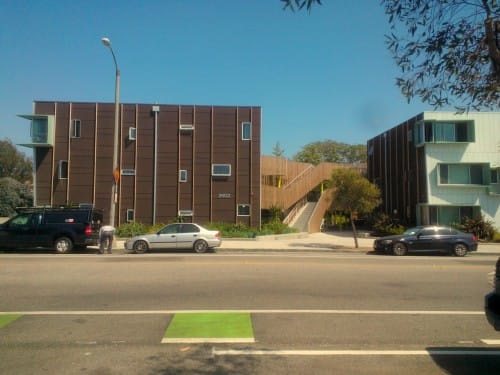
One of the major issues facing Santa Monica voters on November 4 will be whether to approve ballot measures H and HH. The companion measures, if approved by voters, would create a new local funding source for the production and preservation of permanent low- and mid-cost housing in Santa Monica.
The measures, if passed, would generate as much as $10 million a year by raising the fee paid to the city when a property worth more than $1 million sells from $6 per $1,000 of assessed value to $9 per $1,000. (Editor’s note: Santa Monica Next has taken a position in favor of Measures H and HH.)
We sat down with Santa Monica City Council candidate Frank Gruber, a long-time political activist, former Planning Commissioner, and fierce advocate of affordable housing to talk about Santa Monica’s decades-long commitment to providing housing for all.
But why is affordable housing important? Since the 1980s, Santa Monica has focused on maintaining a healthy stock of low-cost units, but that’s become increasingly harder as the city becomes a more desirable place to live and property values skyrocket.
“We have jobs that are going to be filled by people who are working but who would still qualify for this affordable housing. It’s not good for us to have those people commuting in. It adds to our traffic problem,” said Gruber. “But, there is also a cultural issue in Santa Monica, which is the voters want to have an economically diverse community. They don’t want to be Beverly Hills by the sea.
“Santa Monicans have shown that they want to maintain the diversity we have enjoyed forever. Santa Monica was a blue collar town for decades. We had one of the largest factories in the world here, the Douglas plant. Those houses in Sunset Park that are now going for $2 million, were bungalows occupied by blue collar union workers at the Douglas plant back in the day. We are losing that diversity because, on the whole west side, the job growth has been so stunning with very little housing growth to go along with it, meaning rents and property values are skyrocketing… pricing out the working people and the true middle class,” he said.
When Gruber moved into his Sunset Park home in 1983, he said it wasn’t uncommon to see at least one abandoned house on every block. But that has changed and now, the neighborhood is one of the most desirable on the west side of Los Angeles County.
Despite the city’s overall economic success, the voters showed their commitment to keeping Santa Monica’s affordable housing stock up in 1990, Gruber said, when they approved Proposition R. It changed the City charter to require that about a third of all new housing built in Santa Monica be affordable to people with low to moderate incomes, defined as a percentage of the County median.
Proposition R “recognized the market was not creating housing for not only low-income people, but also those with moderate incomes, like school teachers and librarians,” said Gruber.
Private developers were required to meet Prop R standards to supplement the work of nonprofit affordable housing developers like Community Corporation, which would leverage local redevelopment funds to either build new housing or buy old buildings and refurbish them.
But Santa Monica is currently at a crossroads since, in 2012, the State ended California’s 400 redevelopment agencies. Santa Monica’s redevelopment agency provided roughly $15 million a year for the City to spend on meeting Prop R goals. That money is now gone.
Measures H and HH would help Santa Monica make up some of that money, but it wouldn’t replace the cash flow lost in 2012. And without the two measures, Santa Monica may have to rely almost exclusively on private developers to build affordable housing as part of new market-rate housing construction.
“Ideally, the subsidy that is required for building this kind of housing that all industrial countries have to deal with… the ideal way to do that would be to tax the whole society, the whole economy, because the whole economy benefits from this. But, politically, that doesn’t work, has never worked over the 50 or 60 years of federal and state housing policy,” said Gruber.
Relying exclusively on market-rate housing developers to provide affordable housing is also not a fair policy, said Gruber, “because you’re saying that the cost of building affordable housing, which is a social benefit for everybody who wants a diverse community and doesn’t want people commuting to their jobs all the time, the cost is going to be born only by the new people who are moving into Santa Monica.”
And even though there is opposition to Measures H and HH, often couched in anti-development rhetoric and funded by the California Association of Realtors, Gruber believes the residents’ commitment to providing housing for all hasn’t changed.
“I don’t think, as a cultural value, [commitment to providing affordable housing] will change very much. What I hear from most of the anti-development side is actually very favorable to continuing Santa Monica’s economic diversity,” he said. “Sometimes there are disputes about how to do that. They sometimes feel that the affordable housing policies encourage the housing or commercial development they don’t like, but they still hold on to that value and the argument is more about the means rather than the end.”







